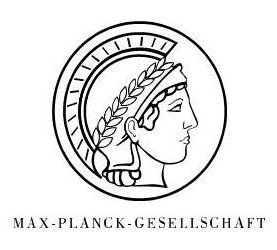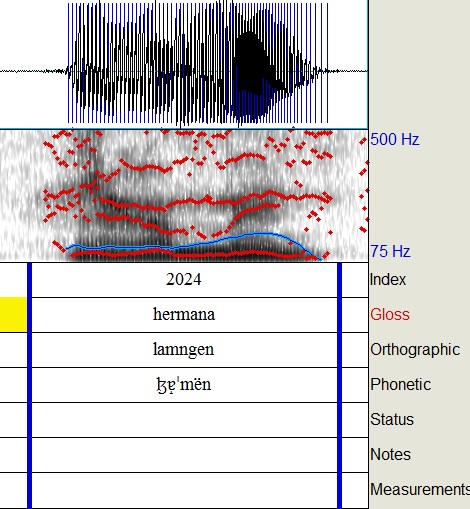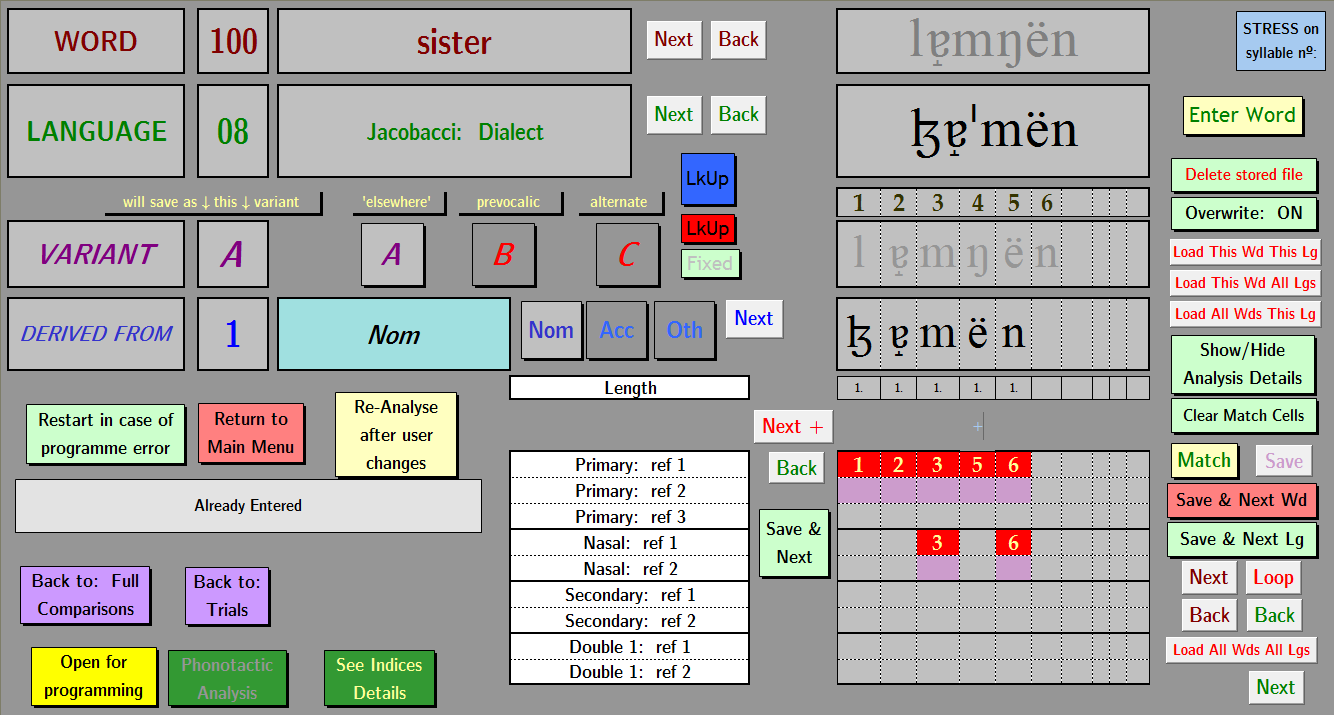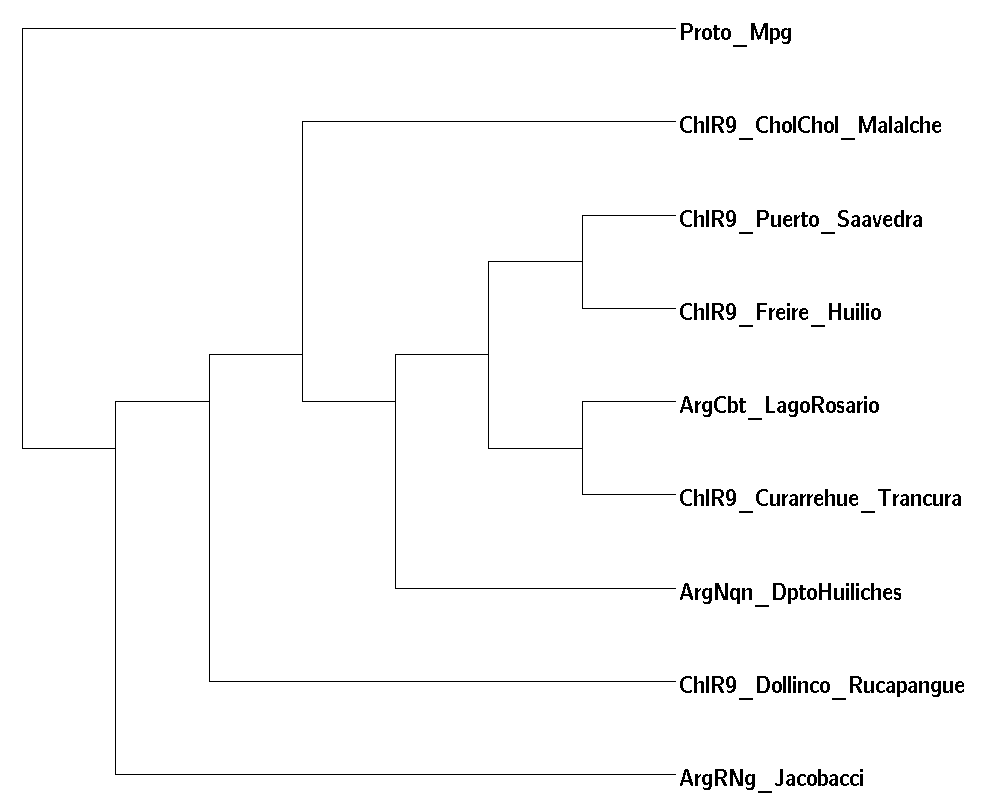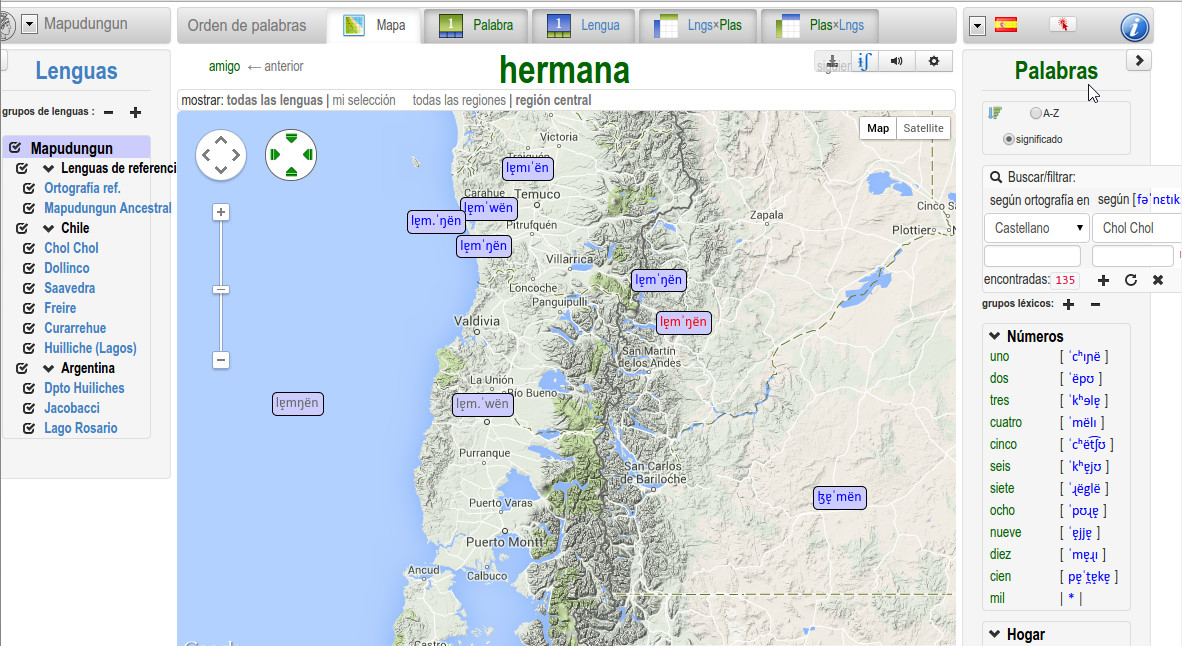Ver en castellano
The main Sound Comparisons: Mapudungun site, with recordings, phonetic transcriptions, glosses, and much more, is here.
The Project
Sound Comparisons: Mapudungun is a project spronsored by the former Department of Linguistics at the Max Planck Institute for Evolutionary Anthropology in Leipzig, Germany, and the Department of Linguistic and Cultural Evolution of the Max Planck Institute for the Science of Human History. Its overarching goals are threefold:
1. Document the phonetic and phonological features of Mapudungun --the language of the Mapuche people in Chile and Argentina-- throughout the extensive area in which it is spoken.
2. Analyze the phonetic divergence of the various regional varieties of Mapudungun in order to better understand the language, establish dialect regions and possibly detect previously unknown population movements and contact situations in pre-history.
3. Share the resulting recordings, phonetic transcriptions and other data with the community through an interactive web site, in order to facilitate language learning, scientific research and other applications.
To this end, we assembled a multi-disciplinary team to perfom the extensive work required to generate, analyze and disseminate the project's linguistic data.
Fieldwork
Fieldwork on theSound Comparisons: Mapudungun project began in June 2012, when Scott Sadowsky and Paul Heggarty spent two weeks seeking out and recording some of Argentina's estimated 8400 Mapudungun speakers, who are scattered throughout a vast expanse of the country's Andean and pampa zones. Fieldwork was then continued in Chile by Sadowsky, who was joined in 2014 by María José Aninao and Isabel Cayunao.
Later, Matías Muñoz Quichiyao, Ignacia Fuentes Burgos, Erik Farías Castro, Catalina Sandoval Muñoz and Margaret Mora Ortega began doing additional fieldwork and post-processing.
The following map details the project's fieldwork sites.
Analysis
After linguistic data was gathered in the field, the next step was to tag and label it in Praat, after which it was analyzed phonetically.
The resulting close transcription was then analyzed by the Brian software (Heggarty), which quantifies the phonetic distance between modern word forms and a reconstructed ancestral form.
The process is repeated for every word uttered by every speaker, generating a large number of distance measurements which form a matrix.
The resulting data can then be fed into phylogenetic analysis software such as SplitsTree, which generates various types of tree and network diagrams.
Interactive website
In order to make the large amount of data generated by the Sound Comparisons: Mapudungun project maximally accessible and useful to the public, we developed a powerful, highly interactive website which is available here.
The site gives visitors access to the recordings, phonetic transcriptions and metadata produced by the project, and allows them to analyze and compare this information on maps, in tables and in lists. There are a variety of ways to work with the data:
- Search by gloss, orthographic word form or phonetic representation.
- Group by lexical field.
- Hand-select from complete lists of elicited words.
All of the above can be done at the level of individual speakers, geographic varieties or the language as a whole. Furthermore, users have the option to conveniently download their search results --both recordings and phonetic transcriptions-- for analysis with other tools.
People
As a large-scale project, theSound Comparisons: Mapudungun project required a great deal of collaboration. Our team consisted of the following people:
Fieldwork |
María José Aninao Scott Sadowsky (PUC Chile / MPI-SHH) Paul Heggarty (MPI-SHH) María Isabel Cayunao Nahuelcheo Matías Muñoz Quichiyao María Ignacia Fuentes Burgos Erik Farías Castro |
|
Post-processing |
Scott Sadowsky María Ignacia Fuentes Burgos Catalina Sandoval Muñoz Erik Farías Castro Margaret Mora Ortega |
|
Phonetic analysis and transcription |
Scott Sadowsky | |
Phonetic distance analysis and software programming |
Paul Heggarty | |
Interactive website programming |
Jakob Runge (Universität Leipzig / MPI-EVA) | |
Brief biographies and contact info for project members can be found here.
Bibliography
The literature on Mapudungun is fairly extensive. Here we present only the bibliography most relevant to theSound Comparisons: Mapudungun project.
Croese, Robert. 1980. Estudio dialectológico del mapuche. Estudios filológicos 15. 7–38. PDF
Heggarty, Paul, Warren Maguire & April McMahon. 2010. Splits or waves? Trees or webs? How divergence measures and network analysis can unravel language histories. Philosophical Transactions of the Royal Society B: Biological Sciences 365(1559). 3829–3843. doi:10.1098/rstb.2010.0099 (28 October, 2014). PDF
Maguire, Warren, April McMahon, Paul Heggarty & Dan Dediu. 2010. The Past, Present, and Future of English Dialects: Quantifying Convergence, Divergence, and Dynamic Equilibrium. Language Variation and Change 22(01). 69–104. doi:10.1017/S0954394510000013 (18 April, 2011). PDF
Sadowsky, Scott & Paul Heggarty. 2012. Variación geográfica del mapudungun. Seminario Internacional: Lenguas Amenazadas y Revitalización Lingüística. Universidad de La Frontera, Temuco (Chile).
Sadowsky, Scott & Paul Heggarty. 2014. Sounds of the Andean Languages: Mapudungun. Cuantificando la diversidad geolectal en base a rasgos fonéticos. V Congreso Internacional de Lenguas y Literaturas Indoamericanas & XVI Jornada de Lengua y Literatura Mapuche. Universidad de La Frontera, Temuco (Chile). PDF
Sadowsky, Scott, Héctor Painequeo, Gastón Salamanca & Heriberto Avelino. 2013. Illustrations of the IPA: Mapudungun. Journal of the International Phonetic Association 43(1). 87–96. doi:10.1017/S0025100312000369. PDF
Acknowledgements
We would like to thank, first and foremost, the many speakers of Mapudungun who have opened their doors to us and shared part of their lives and their knowledge with the world by participating in the project.
We'd also like to express our thanks to Antonio Díaz-Fernández, Pablo Cañumil, Pilar Álvarez-Santullano, Amílcar Forno and Marisa Malvestitti for their assistance in locating speakers, in some cases taking us directly to their doorsteps.
Finally, we'd like to thank Russell Gray of MPI-SHH, Bernard Comrie of MPI-EVA for his steadfast support of this project, and Julia Cissewski for her world-class assistance with project management and administration.
Funding and support
TheSound Comparisons: Mapudungun project has been generously funded by the former Department of Linguistics at the Max Planck Institute for Evolutionary Anthropology in Leipzig, Germany, and the Department of Linguistic and Cultural Evolution of the Max Planck Institute for the Science of Human History in Jena, Germany..
